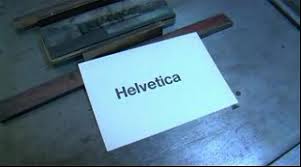
Photo Credit, Google Images. Page One: Inside the New York Times is a documentary that takes you inside the most popular newspaper in America.
What a powerful, informative documentary. Page One: Inside the New York Times really delves into the topic of media producing news. Growing up, I have never been one to run for the newspaper. In fact, the only section I ever wanted to look at was the comics section of my local paper. Any news I would catch a glimpse of would be from the nightly news before dinner. College forced me to broaden my horizon. I took a political science class that made me look into and research current events. I became fascinated with the news. I couldn’t get enough of making sure I was up to date on current events – especially because it was a major election year. And then that semester was over and I was more interested in finishing my Associate’ degree.
Now, I am being a bit more cautious of what is going on. I love books, and I feel at home in bookstores. But the print world is digital now, and it is becoming rare for a person to walk round with a hard-or-paperback book in their hands. It is becoming the same within the news media. So much is digital that all people need to do is go onto the internet on whatever digital device is handy and look up news. Facebook and Twitter give quick links to the news, where more links await the attention of the world.

Photo Credit, Google Images. In the documentary, David Carr, a reporter for the New York Times, consults one of his sources on the phone.
Page One: Inside the New York Times highlights this change in reporting quite well. By taking us behind the scenes, we can see a first-hand look at the struggles that newspapers and magazines are facing. The entire documentary was fascinating – the interviews, the meetings, the research…everything is important to making sure the people have the news they need to make free and self-governing decisions. This is the first priority of journalism. But now, everyone believes they can be a reporter. All they need to do is have their video cameras and phones ready to capture what is going on. Apparently, we are all reporters, and with the help of social media and the rest of the inter-web, anything can be considered “news”.
I have a feeling that in the years to come, I will be going back to this movie to remind myself that there is an art and a sophistication in the practice of journalism. There is an art and sophistication in holding a print newspaper in your hands, turning the pages and smudging the ink with your fingers. Sure, it isn’t as convenient to carry as your phone, but it is still reliable and it is a tradition.


